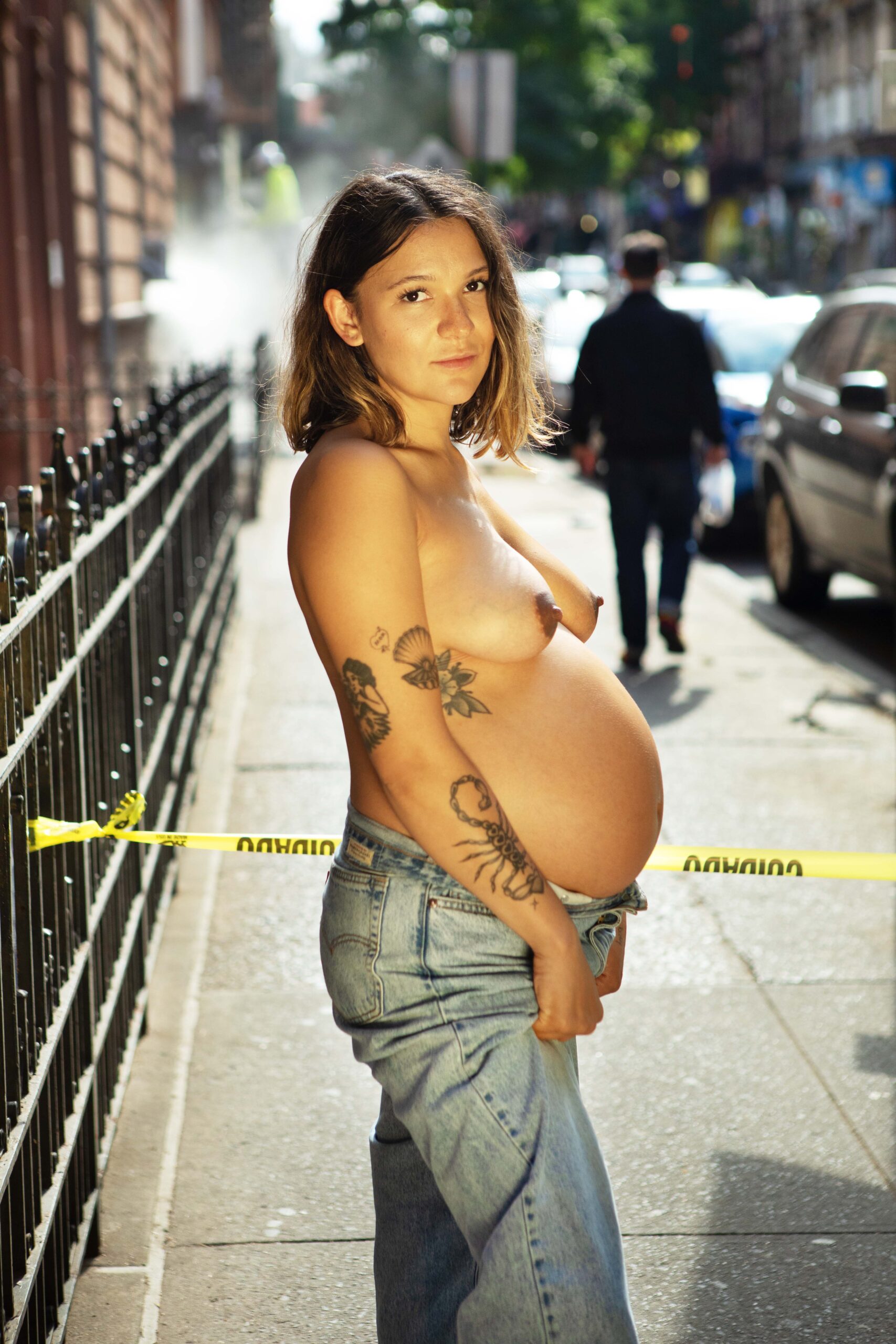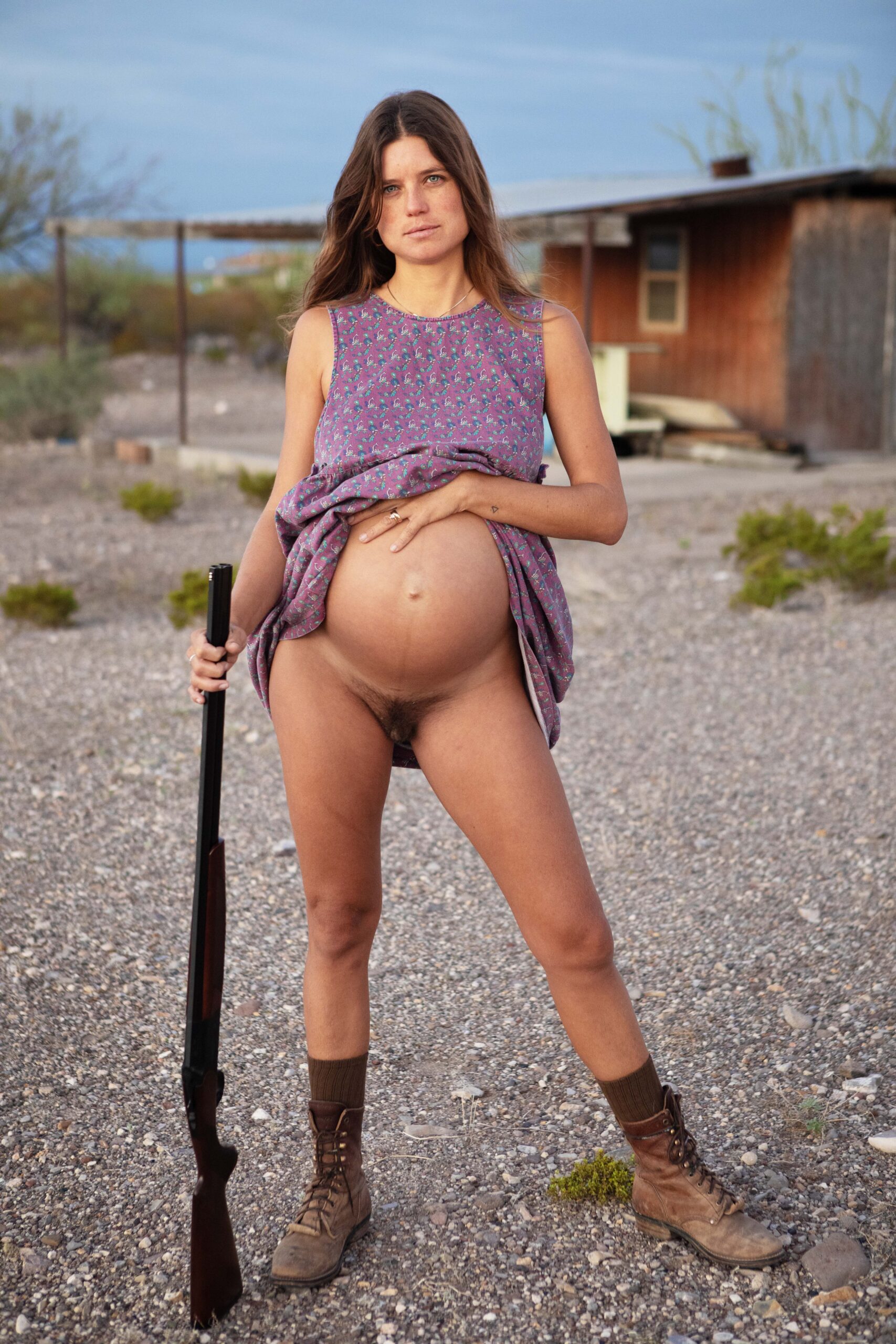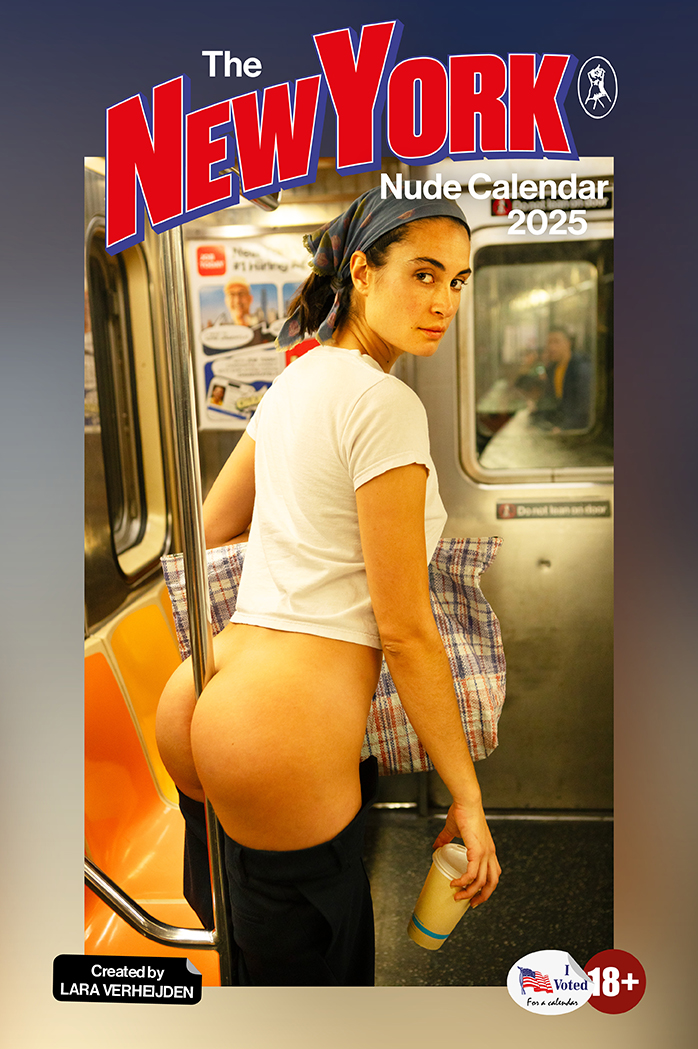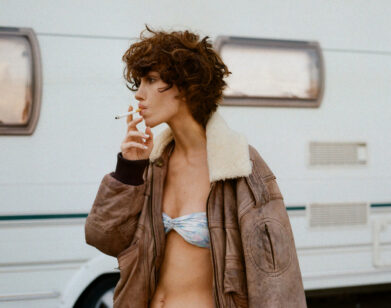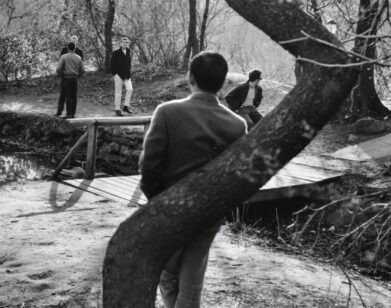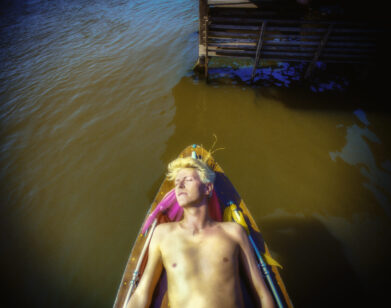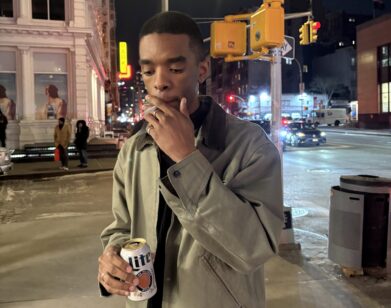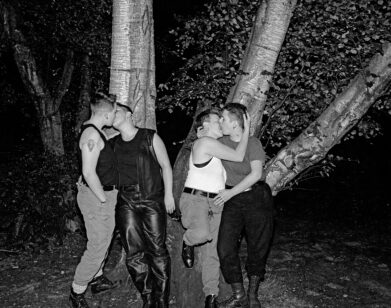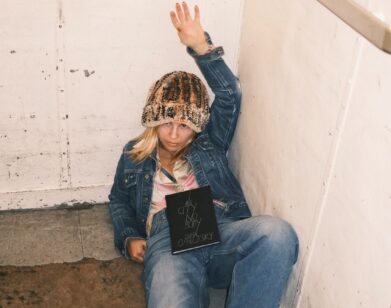NAKED
Meet Lara Verheijden, the Photographer Reinventing the Nude Calendar
“I’m going to fuck you!” groans Eric in the opening sex scene of Turkish Delight, the 1973 Dutch erotic film which a quarter of the country’s entire population ogled in its first week. But after the romp, it all goes wrong. “You’re sending me packing without even giving me a souvenir!” complains his anonymous one-night stand when she’s asked to leave. Eric offers her a piece of paper with a crude doodle of his cock. “Here, hang it over your bed!” he ejaculates back.
If only he had given her one of Lara Verheijden’s nude calendars instead. Based in Amsterdam, the photographer has been shooting naaktkalenders since 2019, inviting the city’s hot young things to get their kit off in public to create sexy keepsakes. She takes inspiration from Turkish Delight and its version of Amsterdam as an unadulterated hub of hedonism and a promised land of promiscuity, a chimera I myself chased when I lived there as a 21-year-old. “Its reputation stems from the 70s when it was very cheap and everything was possible,” she told me over Zoom last month. “Amsterdam still lives off this original fantasy.”
Her images are stripped-back and alluringly raw, swapping glamorous models for guys and gals next door, occupying a stylish cleavage between Juergen Teller and Richard Kern. While holding down a yearly residency at Dutch happening Lowlands Festival, Verheijden has shot calendars in Berlin and Tokyo, always casting through call-outs to fans and friends and capturing their essential attractiveness. “Everybody is somebody someone wants to have sex with,” she says of her ideal subject. This year, she’s been living her American (wet) Dream, heading on a road trip to Texas and, most recently, New York, for the 2025 edition of the calendar, which releases this Friday. Of New York, she says: “It really blindsided me because everyone is above-average beautiful.” Ahead of the calendar’s launch at Sovereign House, I caught up with Verheijden to chat about the new Amsterdam, the calendar as an object, and the city as a character.
———
KYLE MACNEILL: Are you in Amsterdam at the moment?
LARA VERHEIJDEN: Yeah, I got back last week.
MACNEILL: I really miss Amsterdam. I lived there about six years ago now, and I’ve not been back since. Has it changed much?
VERHEIJDEN: If it has, I wouldn’t know. I’m too close to the boiling water with the frog. Did you hear me speaking Dutch with my boyfriend just now?
MACNEILL: Yeah, I did.
VERHEIJDEN: Does that bring back memories?
MACNEILL: It does. But my Dutch went as far as walking around Albert Heijn and learning vegetables. In many ways, it’s such a liberal city and that’s what people see it as. But do you think people have the wrong idea about Amsterdam?
VERHEIJDEN: Well, I think Amsterdam’s reputation stems from the 70s or 80s, when it was a very cheap city where everything was possible. Turkish Delight, sexy movies, and happy Dutch prostitutes. This ideal, it’s really not there anymore. I live in the north, which is a whole village on its own, like Brooklyn for Amsterdam.
MACNEILL: I used to love going to Sexyland and Pllek.
VERHEIJDEN: Exactly, that’s where I live. But when I’m in the center and I see all the tourists, I feel so bad for them. This is their promised land, and it must be such a big disappointment. Everything closes at three and there’s depressing Polish prostitutes and weed. It’s cold and rainy and expensive. For me, none of that’s romantic.
MACNEILL: As a British student, I was so excited for that hedonistic promised land, as you said. Then I realized most of the locals I met didn’t really care. None of them smoked weed or did drugs or went out.
VERHEIJDEN: It’s true. Well, I know a lot of people do drugs, but not a lot of people smoke weed.
MACNEILL: In the UK, it still kind of has a rebellious element to it. Weed is still illegal. Whereas as soon as your parents are doing it, it kind of loses that edge, right?
VERHEIJDEN: But I know no parents who did that. There’s always a few guys in your high school who do it a lot, the stoners. I would have crushes on stoners. But mainly, I think it’s people who do it every day or people who don’t do it at all.
MACNEILL: That’s it. I used to walk past the red light district on my way to the university every day. There’s so many creepy men always standing there, just staring. I never knew if it was true, but someone told me that the sex workers have a bucket of liquid that they throw out the window at people like that– a mix of beer and piss.
VERHEIJDEN: It’s a little bit depressing. There are some initiatives to make it more cool and, I don’t know, artistic. There are a lot of new shops and radio stations and designer offices.
MACNEILL: I was reading that they’re actually moving the red light district, supposedly out of town.
VERHEIJDEN: No, I don’t think that will ever happen. I mean, this is an idea that’s been juggled in the air because, as you said, the more conservative government is in power. But in Amsterdam, we have a mayor who is associated with the GroenLinks party. From both the conservative side and the liberal side, there’s a bit of toning down this edginess. She put signs everywhere like, “Don’t Photograph the Sex Workers,” don’t do this or that. I am guessing it comes from a good heart, but it also depresses the place a bit. It’s not cool anymore.
MACNEILL: And you mentioned Turkish Delight, a film that had that vision of old Amsterdam. I think 26% of Dutch people saw it in the first week of its release, which is insane. That inspired you, right?
VERHEIJDEN: Well obviously, the calendar has this kind of gimmicky or touristy mug or postcard quality. Being in Texas or Tokyo did make me realize that we are still very free in Amsterdam, that I could just be naked on the street for a shoot and take an hour.
MACNEILL: You had to shoot inside a lot for the Tokyo calendar, right? Because it’s illegal there.
VERHEIJDEN: I shot everything inside, actually. I don’t know if I should say this because maybe it removes the magic of the photos a bit, but it’s very intimate. I really like the Tokyo calendar. I also like the Texas calendar. And the other day I thought, “What do they have in common?” Usually it’s just me and the model, not the crowd, not the tension that is created when you shoot in public. A naked body on the streets surrounded by other people is so different from a naked body in a studio. But when there’s no people present in the photo, I have to search for something else.
MACNEILL: I imagine most people are more confident posing when they’re alone. But in the original calendars, where it’s outside and there’s lots of onlookers, crowds probably get off on that buzz as well.
VERHEIJDEN: Definitely. It’s a whole different vibe. If you are alone, you don’t have the tension of onlookers and public nudity, which is exciting in itself. It will elevate your photo. It can be a very easy portrait but exciting, based on the fact that it’s outside. If you’re inside, you have to look more and can do more extreme things.
MACNEILL: Your original calendar was in 2019 in Amsterdam with Mark Stadman, whom you collaborated with. How did you come up with the direction? It’s got that kind of Juergen Teller thing going on. Why did you want to go down that direction of casting real people and giving it this kind of authenticity and rawness?
VERHEIJDEN: I was applying for funding and I thought it had to be linked to the city of Amsterdam, because the funding was from the municipality of Amsterdam. That’s the more boring, logistical reason why we had the idea of the Amsterdam nude calendar. But we also talked about Turkish Delight and these postal cards and this culture that is cultivated around Amsterdam that is actually a fairytale a bit, but it’s such a powerful fairytale that really speaks to people’s imagination, and also to mine. It’s how I immediately knew that this was a good idea. Then I did a casting call, and a lot of people applied on Instagram. It was a mix of random people that I didn’t know, but also some friends or acquaintances. I really realized that it worked well with my photography. Like, if people are not making money or used to professional posing, the photos are really good somehow.
MACNEILL: That’s what I love about them, the realness.
VERHEIJDEN: I think you can create this realness with famous people. Juergen Teller, for example, he’s very famous for it.
MACNEILL: He kind of demystifies them.
VERHEIJDEN: Or he touches a different part of their realness. Everybody’s real, of course, because we’re all people. I am very much inspired by him. But I don’t have access to supermodels and famous people, or I did not at all at that time. So it was just something that happened because of the limitations of my project. Then I thought, “Well, now I have to shoot in Amsterdam because we linked it to the city.” The first calendar was not at all touristy, because I know Amsterdam through and through. This is very different from New York, for example, where I chose the Brooklyn Bridge, Times Square, Madison Square Garden. Because I’m not from New York, I think New York was almost a character in itself.
MACNEILL: For you, New York has that fairy tale element that you see other people have about Amsterdam.
VERHEIJDEN: Exactly. And I know Amsterdam as the boring, rainy version, so I went with the realness of the people and tried to pick the ones that I thought would work best.
MACNEILL: When you did your New York casting call, you said that you’re looking for anyone on the spectrum of hot to ugly, which I really liked. It’s testament to how you shoot, and your style. But how do you select these people? There’s a real diversity in the kind of people that you shoot, yet there’s something really special about them all as characters.
VERHEIJDEN: Good question. Obviously, I get asked that a lot, and over the years I think I have slowly found an answer. And that is that everybody in general is someone you want to have sex with. I think for everybody, it’s possible to find what makes them attractive. I try to find people where I don’t have to look for that very hard. I can easily see what makes them attractive or how you can fetishize them. Everybody has something that you can or cannot do with them, which makes them attractive. Attractiveness is also different from beauty, maybe.
MACNEILL: Definitely.
VERHEIJDEN: Of course, there’s also maybe very ugly people who nobody ever wants to have sex with. But that’s not the people I’m photographing. And even those people, they probably have something attractive about them.
MACNEILL: Your power is that you bring out that moment. And I think that’s why you get so many people lining up to be photographed by you, because you frame them in a way that makes them feel sexy or attractive or beautiful.
VERHEIJDEN: I hope so. I mean, you can kind of divide the applications. It’s indeed people who think, “Oh, it’ll be funny,” or “I’ll get nude with my friends and it’ll be a memory.” People who got a boob job or they have always struggled with their body image and want to capture it. It’s almost therapeutic. Or, there’s people who just really love art and say, “You can do whatever you want with me.”
MACNEILL: Has it been therapeutic for you at all?
VERHEIJDEN: No, not at all. I’m not coming from a nude house. My parents are not hippies at all. But they are not moralistic or prudish. For me, there’s really nothing there. It’s not sexual for me. Maybe that makes people at ease.
MACNEILL: I feel like two enduring motifs throughout your work are pregnant people and pets. I love that image from the Tokyo calendar with a huge, fluffy cat.
VERHEIJDEN: Oh my god, I love it.
MACNEILL: Is there something about vitality and life that interests you? Why do you think you’ve returned to cats and pregnant moms?
VERHEIJDEN: It’s funny you should say that because this is something nobody’s ever asked me. I do like to shoot pregnant women and people with pets and families. I always enjoy it when somebody’s like, “I want to apply and I have a huge rabbit.” Or, “I want to do it together with my sister and my mom.” I think I just like to combine something that’s linked with nudity and sex and play with the fact that it’s wrong but it feels right and wholesome or something.
MACNEILL: I wanted to ask you about the calendar as an object, which I know you touched upon earlier when you said there’s something touristy about it. But for me, the calendar is such a powerful object. It’s an everyday, quotidian thing that we hang up, but it’s also something that kind of determines our every move in life. Once we write something down, we obey it. What is it about the object that interests you?
VERHEIJDEN: Well, what you just said about obeying, I honestly had never realized that, but you’re right. It’s impossible to use my calendar like that because it has no room for writing anything down. But what I like about it is that people have no problem hanging it on their wall or framing it in a way that they would never do with a photo book, even though it’s the exact same thing. People have a place in their house where they can hang it and turn it over. It kind of demands that from people, and they do it. It was a gimmicky joke that we made a calendar. But people immediately understand, “Oh, it’s a nude calendar.” It has this joyful, understandable frame that people accept right away. I don’t have to invent that. It’s all there. I can just step into a tradition and see the ideas that people have.
MACNEILL: I think it’d be pretty fun if people didn’t flick through all the pictures at once and waited each month, like a surprise.
VERHEIJDEN: Some people do that. I actually just got a message from somebody that I shot in Texas. And he was like, “There’s some girls with a penis.” And then I said, “No, that’s just a guy with long hair.”
MACNEILL: Amazing. Your Instagram bio says you’re not for everyone. Are you suspicious of people who are for everyone?
VERHEIJDEN: Well, maybe I’m just bored by them, or I could never be like them. I do like the fact that you put up a little hurdle before people contact you. Rarely, I get creepy messages from guys who don’t understand the concept. But almost everybody gets it.
MACNEILL: People get it, and that’s why they’re turning up to your shoots.
VERHEIJDEN: That’s true. But then in Texas, obviously, I didn’t know anyone, and it was the first time I shot a state. If I did an Austin calendar, it would’ve been easier, I think. But I wanted to do everything: Houston, Dallas, Marfa, the desert, and also Austin, which completely changed how I usually work. People responded, but not many like in Berlin. So I just accepted everybody who wrote me. And then the calendar got so good because of this.
MACNEILL: I mean, Texas is like a country.
VERHEIJDEN: It’s huge. Like, 10 times the size of Holland.
MACNEILL: I just looked it up: Netherlands is 6% the size of Texas.
VERHEIJDEN: Tell me, what do you think about when you say Texas?
MACNEILL: Definitely cowboy central. Definitely socially conservative from a UK perspective. And Austin, Texas, I think about live music and a kind of rawness and roughness and grittiness.
VERHEIJDEN: You passed my test. As soon as a city or a country or something has this kind of touristy thing that you can put on a mug, then it works. But it doesn’t work with every city.
MACNEILL: What was New York like? Had you been before?
VERHEIJDEN: I had been a few times before, but New York was definitely the hardest one I did. Because actually, all the people who wrote me were drop-dead beautiful models and micro-celebrities. It was very unreal for me—the opposite of Texas. And it actually made it harder, because there was an abundance of everything. The city keeps on giving and giving. I really had to reinvent myself in the process.
MACNEILL: And are you happy with the results?
VERHEIJDEN: I’m absolutely happy, yeah.
MACNEILL: What did you think of the city as well, generally?
VERHEIJDEN: It was so easy to shoot outside in public. People were so incredibly nice and supportive and happy or yelling things like, “This is why I live in New York.” That was a surprise to me, because I had a stereotypical idea of people in the biggest city of the world that would be annoyed or wouldn’t care at all. But they absolutely did care. It is a bit of a performance when you do it in a very busy space. People will interact with it, and I do like that.
MACNEILL: I don’t think it could ever work in the UK. I just think people are too prude. I mean, the fact that smoking weed is still rebellious shows how prudish we are.
VERHEIJDEN: What do you see when you think about London or something?
MACNEILL: I mean, I think London definitely lends itself to the kind of tourist iconography that you were talking about with these other cities. People come to London and they want to see the red phone boxes and the Beefeater guards standing outside Buckingham Palace. They want to see all these kinds of things that are so meaningless now.
VERHEIJDEN: There’s the royalty. I think if I would do a UK version, I would not do the city. I would find castles or big houses. Pearl necklaces, hunting people. More like these paparazzi photos of Diana and her sons when they were young in their green coats.
MACNEILL: And you could do punting in Cambridge, the people on the boats standing up. That kind of old England thing. And my last question is, have you decided on your next city?
VERHEIJDEN: Well, now I’m getting into this British hunting. And I would love to do it in Brazil. I haven’t really done that vibe yet. I’ve been to Rio a few times, but I noticed in Brazil that people are prudish. It’s a very sexual country—people are very sexual and suave. But if I didn’t wear a bra, that was really provocative.
MACNEILL: That kind of takes us right back to the start with Amsterdam. Liberal in some ways, but there’s always nuances and subtleties.

